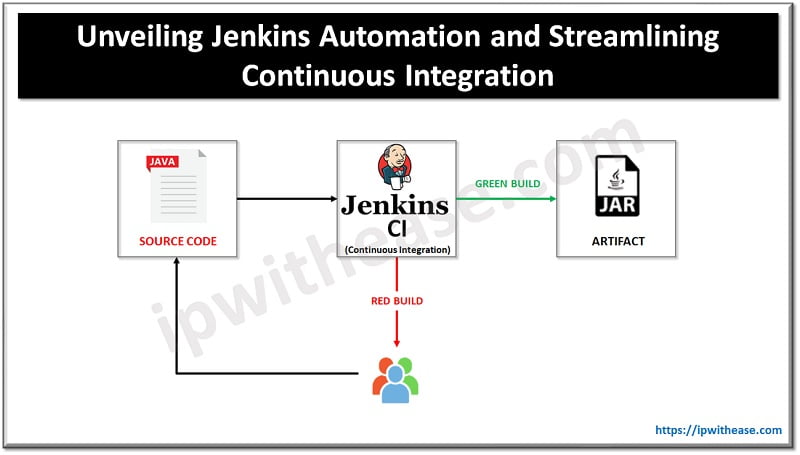The capacity to write, test, and deploy high-quality code quickly is essential in the fast-paced world of software development. Here, Jenkins, the foundation of contemporary development techniques, comes into play. With the help of automation and continuous integration, Jenkins has grown to be a crucial tool for development teams all over the world.
Understanding Jenkins: A Development Efficiency Catalyst
The software development process may be automated in numerous ways thanks to Jenkins, a top open-source automation server. It enables development teams to work more quickly and efficiently on everything from writing, testing, and delivering code to handling repetitive activities. Jenkins stands out because of its versatility and extensibility, which lets developers customize their automation pipelines to meet the needs of particular projects.

Jenkins’s Significance in Continuous Integration
Now that we’ve covered what is Jenkins, let’s uncover its significance. The idea of continuous integration (CI) is at the core of contemporary software development. In order to detect mistakes early in the development cycle, CI involves the routine integration of code changes into a common repository, followed by automated builds and testing. With this proactive strategy, the development cycle is sped up and integration problems are decreased.
Jenkins is the keystone of efficient CI since it streamlines the integration procedure. When programmers update their code in a version control system, Jenkins starts automatic builds and testing. Regardless of the technologies your team employs, Jenkins smoothly interacts with a broad range of version control systems, including Git and Subversion, to guarantee a smooth integration workflow.
The Potential of Jenkins’ Test Automation Tools
The methodology of software testing has been transformed by test automation tools.
- They provide programmers the ability to produce automated test scripts that imitate user interactions, guaranteeing complete and consistent testing across many circumstances.
- Development teams may obtain a greater degree of code dependability and quicker release cycles by integrating test automation technologies into the Jenkins process.
- Tools for test automation are crucial to the CI process in the Jenkins world. Jenkins automatically starts a number of tests when code changes are included, ranging from unit tests to integration tests and even end-to-end tests.
- These tests offer quick feedback on the quality of the code, assisting developers in finding and fixing problems as they arise.
- Jenkins manages the test automation process, giving the development team assurance regarding the functioning and stability of their software.
Jenkins Pipelines Customization: Flexibility in Action
Jenkins’ ability to build tailored pipelines is one of its unique characteristics. The sequence of actions necessary to develop, test, and deploy code is represented by a pipeline in Jenkins.
Development teams may build their own process, adapt it to project requirements, and easily integrate numerous tools thanks to these customization capabilities.
It is possible to write Jenkins pipelines as code, often known as “Pipeline as Code.” The advantages of version control and teamwork are brought to your automated process by this method. Developers may manage pipeline configurations concurrently with their codebase, ensuring that changes to the automation process are recorded, examined, and documented in the same ways as code changes.
The Jenkins Ecosystem: Increasing Opportunities
A prosperous ecosystem of extensions and integrations has developed as a result of the popularity of Jenkins. Generally, Jenkins has the ability to easily integrate into your current development environment, including cloud-based services like AWS and Azure in addition to collaboration platforms like Slack and JIRA.
The idea of “Blue Ocean,” a cutting-edge user interface that makes pipeline building, visualization, and maintenance simple, is also supported by Jenkins. Furthermore, Blue Ocean’s user-friendly interface turns complex pipeline settings into aesthetically pleasing and understandable representations, thus making automation easier to understand to teams of all sizes.
Bottom Line: Automating Development Will Facilitate It
One cannot overestimate Jenkins’ contribution to contemporary software development. Its contribution to task automation, streamlined continuous integration, and even support for test automation tools has completely changed how development teams work. It gives developers the freedom to concentrate on what really matters, which is building creative, high-quality software, by automating monotonous activities and assuring early issue identification.
Jenkins is a dependable partner, adjusting to the constantly shifting needs of the industry as the landscape of software development changes. It is a vital tool for development teams devoted to staying at the leading edge of innovation because of its capacity to promote effective collaboration, improve code quality, and speed up the release cycle.
Continue Reading:
What is the difference between Sandbox & Development Environment?
What is Infrastructure as a Code (IaC)?
ABOUT THE AUTHOR
IPwithease is aimed at sharing knowledge across varied domains like Network, Security, Virtualization, Software, Wireless, etc.



